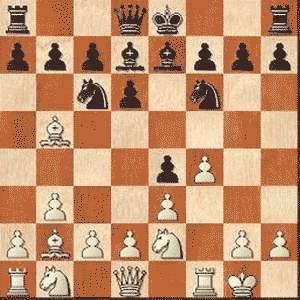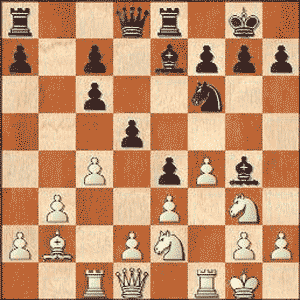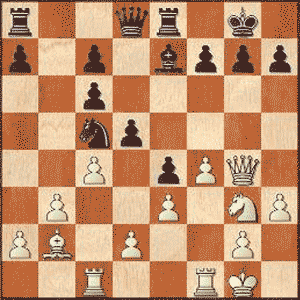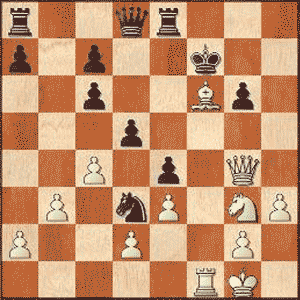| Back to Back Issues Page |
 |
|
LCB, Issue #114 --, Go Wild with Larsen's Opening December 01, 2024 |
Go Wild with Larsen's OpeningLapoc Chess Board, Issue #114 -- GOTM #84 learn and play online chess Larsen's Opening otherwise known as Larsen's Attack may be for you if you have the heart of an adventurer. 1.b3 may seem like a humble beginning but your b2-Bishop will bear down on the Black King. In many lines White will castle Queenside and attack the Black Kingside, his Knights and heavy pieces working with the Larsen Bishop on b2. The opening takes it's name from Danish GM Bent Larsen who developed this attack and we are going to look at one of his games now to see how he handled the opening. He played against Brian Eley in Hastings, England in 1972, where a crazy game took place. Go Wild with Larsen's OpeningLarsen, Bent - Eley, Brian [A01]GotM #84 Hastings, 1972 [Connaughton, Ken] 1.b3 Larsen's Opening, named after Ben Larsen. He made this opening very popular by demonstrating it's potential for many tactically wild situations, the kind of which Larsen loved to play. 1...e5 Modern Variation - The most common reply these days but there are many others. (1...d5 Classical Variation - The old Main Line; 1...Nf6 Indian Variation; 1...b6 Symmetrical Variation; 1...c5 English Variation; 1...b5 Polish Variation; 1...f5 Dutch Variation) 2.Bb2 The Larsen Bishop is a key feature of this opening, a constant presence on the long dark diagonal. 2...Nc6 3.e3 Nf6 4.Bb5 d6 5.Ne2 Bd7 6.0-0 Be7 7.f4 To open the f-file and/or the long diagonal. 7...e4
And it is the long diagonal that White has gained as we move into the middlegame. 8.Ng3 0-0 9.Bxc6 bxc6 Because this is no diagonal for the Bishop with the blocker on e4. 10.c4 d5 11.Nc3 Re8 12.Rc1 Bg4 13.Nce2
Blocking the attack on the Queen and allowing the Rook to retake on c4 if need be. 13...Nd7 The Knight sets out for the prize of d3. If he manages to slip in there he will be an unsettling presence for White. 14.h3 Bxe2 15.Qxe2 Nc5 16.Qg4
Winning a tempo by threatening #. 16...g6 17.f5 By conceding d3 to the Black Knight, White has gained time to get a strong attack. 17...Nd3 Black forks a Rook and the Larsen Bishop. 18.fxg6! White's attack is too fast. 18...hxg6 (18...Nxb2 19.Rxf7 Bg5 20.Nf5 hxg6 21.Rg7+ Kf8 22.Rxg6+-) 19.Rxf7! Rook sacrifice to destroy the defensive structure. 19...Kxf7 20.Rf1+ Bf6 21.Bxf6
And Black resigns. (21.Bxf6 White had too much power after the exchanges. 21...Qxf6 22.Rxf6+ Kxf6 23.cxd5 cxd5 24.Qd7 Red8 25.Qxc7+- with a decisive advantage for White.) 1- 0 Larsen, Bent - Eley, Brian [A01] P.S. If you do not have html based email software and you're using a text only system, you may find that the links are only partially highlighted and may not work. If this is the case, simply copy and paste the entire link into the browser and hit Enter. That should get you where you want to go. Comments, ideas, feedback? I'd be stoked to hear from you. Get in touch See you next month. Ken 
|
| Back to Back Issues Page |



